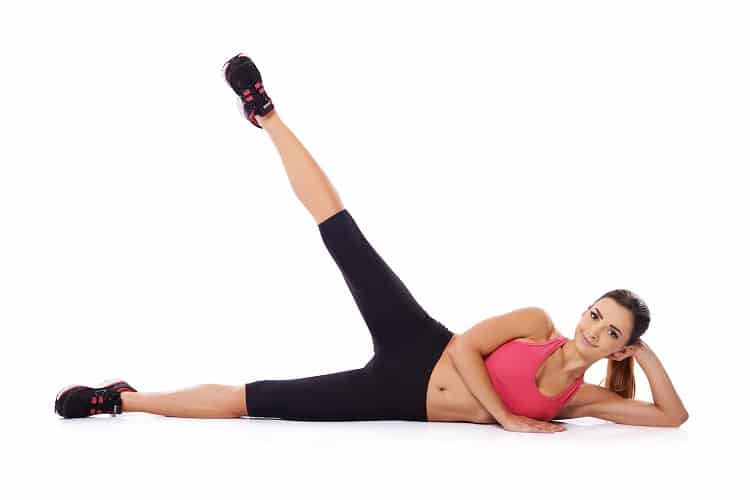5 Exercises against Pelvic Resolution

5 Exercises against Pelvic Resolution
Pelvic remission is a known and widespread problem in pregnancy. Pelvic solution is caused by a hormone called Relaxin. Relaxin produces and converts collagen - to increase flexibility and movement in muscles, tendons, ligaments and tissues in the birth canal and around the pelvis. This helps to give enough movement to the area so that the baby can be born.
It is important to remember that pelvic problems are often summarized by several different factors. Among other things, posture (increased curve in the lower back and forward tilted pelvis), tight muscles (the back muscles and buttocks muscles become tight to try to "hold" the pelvis that tips forward) and joints become irritated and dysfunctional (often there may be a hypomobic joint locking in it one pelvic joint while the other is hypermobile) - of the latter it is important that this movement is symmetrical.
There are 3 main goals we have when it comes to training and stretching against pelvic resolution:
- Stretch tight back and buttock muscles
- Strengthen the back, core, hip and seat muscles
- Restore normal symmetrical movement of the pelvic joints
Also read: - Pelvic solution? Read more about it here!
The 5 exercises we have chosen as our candidates for use in a more stable and functional pelvis are not the only exercises that work - there are many others out there. But we have therefore chosen to focus on these 5 exercises that can promote pelvic stability in a gentle and effective way.
1. Seat reclining

A gentle and safe stretching exercise that contributes to better function and more flexibility in exposed gluteal muscles - such as the musculus gluteus medius and piriformis.
How: Lie on your back - preferably on an exercise mat with support for your lower back. Pull one leg towards you and place it over the other - then use the other leg to help you stretch.
How long: Clothes exercises should be held for 3 sets of approximately 30-60 seconds on each set. Repeat on both sides.
Video: Seat reclining
2. "OYSTER" exercise (strengthens hip, thigh and pelvic muscles)
The oyster exercise contributes to improved seat activation, more hip stability and increased pelvic strength. The exercise can be performed with or without training elastic - although we recommend that you use elastic to get the right load. We recommend this training knit set with 6 different strengths (opens in new window) so you can change strength as you get stronger.
How: Lie on the side in a supported position. Again, we emphasize that you should preferably use a training mat for optimal comfort. Keep your heels close to one another throughout the exercise and allow your legs to be pulled apart gently in a gentle and controlled motion.
How long: Performs 10-15 reps over 2-3 sets
3. Lying seat lift

One of the most important exercises you can do throughout pregnancy. Lying seat lift promotes cooperation between the back, pelvis, hip and thighs - at the same time as it strengthens important core and pelvic muscles.
How: Lie on your back with your arms down the side. Make sure your neck has support (use a rolled up towel, for example) and that you use a training mat. Raise the seat upwards in a controlled and smooth motion.
How long: Performs 10 reps over 3 sets
Video: Reclining seat lift / pelvic lift
4. Lateral leg lift (strengthening outside of pelvis and hip)

It is important to increase pelvic stability in all planes - including the lateral stability plane. Lateral leg lift is a great exercise that insulates the outside of the hip and pelvis - and which effectively helps to strengthen the hip and pelvis in a safe and good way.
How: Lie on the side with support under your head. Lift your leg slowly and controlled upwards in a smooth motion.
How long: Performs 10 reps over 3 sets
Video: Lateral leg lift
5. Arm circles on therapy ball («stirring in the pot»)

When you are pregnant and in pregnancy, it is for natural reasons necessary with adapted core exercises. Arm circles on a therapy ball are a type of "dynamic plank" that strengthens the core and back muscles in an effective and safe way. It is surprisingly heavy and will probably be felt by many.
How: You will need a therapy ball to perform this exercise. Stand in the "plank position" (preferably with your knees on the ground if necessary) and support your elbows on top of the therapy ball. Then move your arms in controlled circles with alternating 5 repetitions on each side.
How long: Performs 10 reps over 3 sets
Video: Arm circles on therapy ball
Summary
Now you have seen 5 exercises against pelvic solution that can contribute to increased core and pelvic function. General training is also recommended according to ability - preferably walks in rough terrain and pool training. We recommend that you contact your clinician if you are unsure whether these exercises are suitable for you due to a proven disease diagnosis or similar.
Recommended and used training equipment for these exercises
Training strokes can make your training more efficient and make you progress faster.
Press here: Complete set of 6 different workouts (link opens in new window)
Next page: - This You Should Know About Pelvic Pain
 - Feel free to follow Vondt.net at YOUTUBE
- Feel free to follow Vondt.net at YOUTUBE
 - Feel free to follow Vondt.net at FACEBOOK
- Feel free to follow Vondt.net at FACEBOOK
Ask questions via our free inquiry service? (click here to learn more about this)
- Feel free to use the link above if you have questions

















